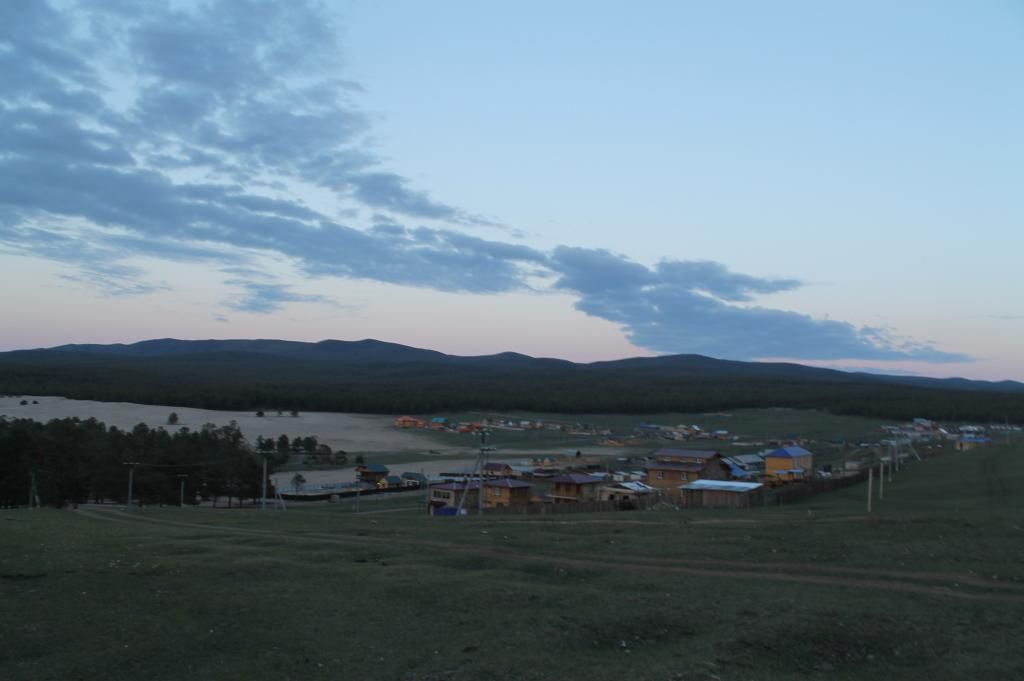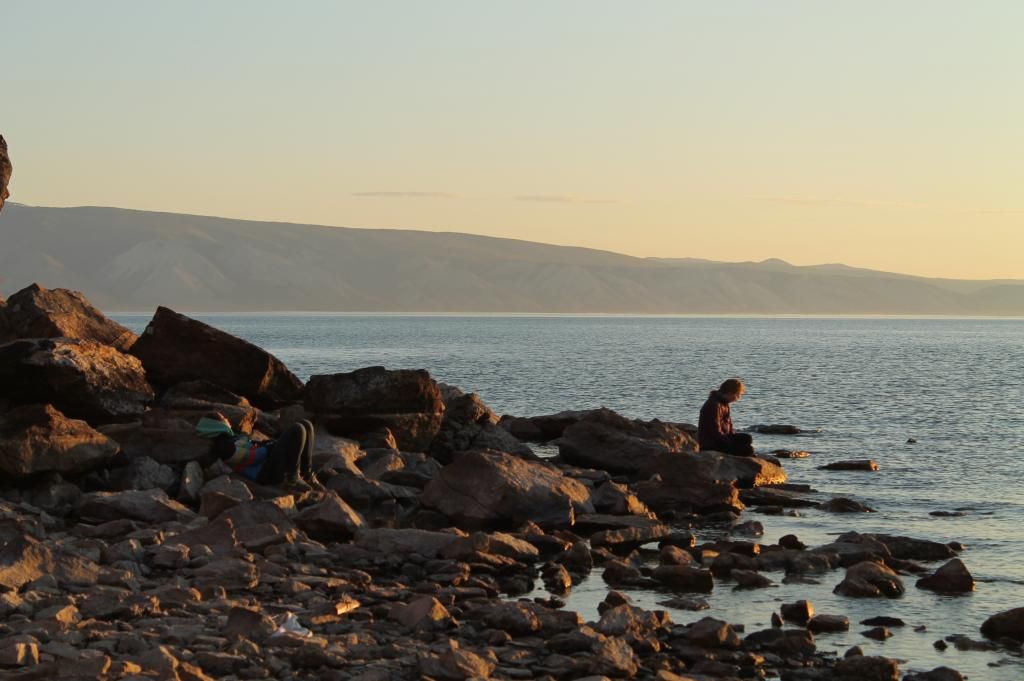When we first arrived in Ulan-Ude, one of the first things I noticed as we drove through town was a healthy display of Victory Day banners and billboards. I was a little surprised, to be honest – it didn’t occur to me that the Great Patriotic War could have possibly affected small-town Siberia.
Indeed, the battles of World War II never reached Buryatia – the Pacific Front, as it concerned the Soviet Union, consisted of a few land grabs. On Russia’s Western Front, the Nazis came within miles of Moscow, sieged Leningrad, and fought a horrific battle at Stalingrad, but Buryatia remained safe several time zones away.
Siberia became a safe haven for the Soviet Union during that time. Entire factories were picked up and transported eastwards across the rail lines to keep them out of Nazi hands. Wounded soldiers, too, found themselves in the safe embrace of the steppe. With this influx of new arrivals, even regular citizens were brought face to face with the war effort. In Ulan-Ude, for example, every school was converted to a temporary hospital. Imagine how startling and strange it would be as a young student to see your school overwhelmed by injured soldiers from far-flung places.

This memorial, which we saw on our first day in town, commemorates the Great Patriotic War. Each pillar symbolizes a different year in the conflict. The first year, 1941, was marked by extreme difficulty, such as the near-capture of Moscow and the beginning of the Siege of Leningrad. As a testiment to the great hardships of this year, its pillar is leaning heavily, seemingly about to collapse. 1942 was also a very trying time, so it, too, tips sideways. But the tide began to turn as the war went on. The Nazis were eventually pushed back, and this is reflected in the straight, steadfast pillars that represent 1943 and 1944.
We encountered World War II again on our last evening in Ulan-Ude, when we found ourselves in the Philharmonie, a Soviet-era theater on the city’s main square. The building was beautiful inside, decorated with mouldings of hammers and sickles, bundles of grain, and other communist motifs.

We came to view a (new) play, presented by local actors and featuring performers from around the area. The production told the story of a group of nurses at a Buryat military hospital during the war and showed how intimately the far-off battles affected these women’s lives. One struggles with the distance separating her from her lover on the front lines. Others meet and fall in love with wounded soldiers from far corners of the Soviet Union, people they would never otherwise have met.

Seeing the war from the perspective of these nurses, it was much easier to understand the extreme scale of World War II and the Soviet Union. In this small city more than 2500 miles from Moscow, people of different races, cultures, and traditions were thrown together by the same war, as citizens of the same nation. It’s easy to see the differences between eastern and western Russia, but seeing the role of Ulan-Ude in the war was a good reminder of the strong ties that keep the people of Russia connected.
Other sources: Rada, our amazing Buryatia tour guide
Category Archives: Places
The Sun Also Rises
Olkhon. Have you ever heard of such a place? It is the largest island in Lake Baikal, with a combination of harsh, steep cliffs and rolling green hills. It is beautiful.
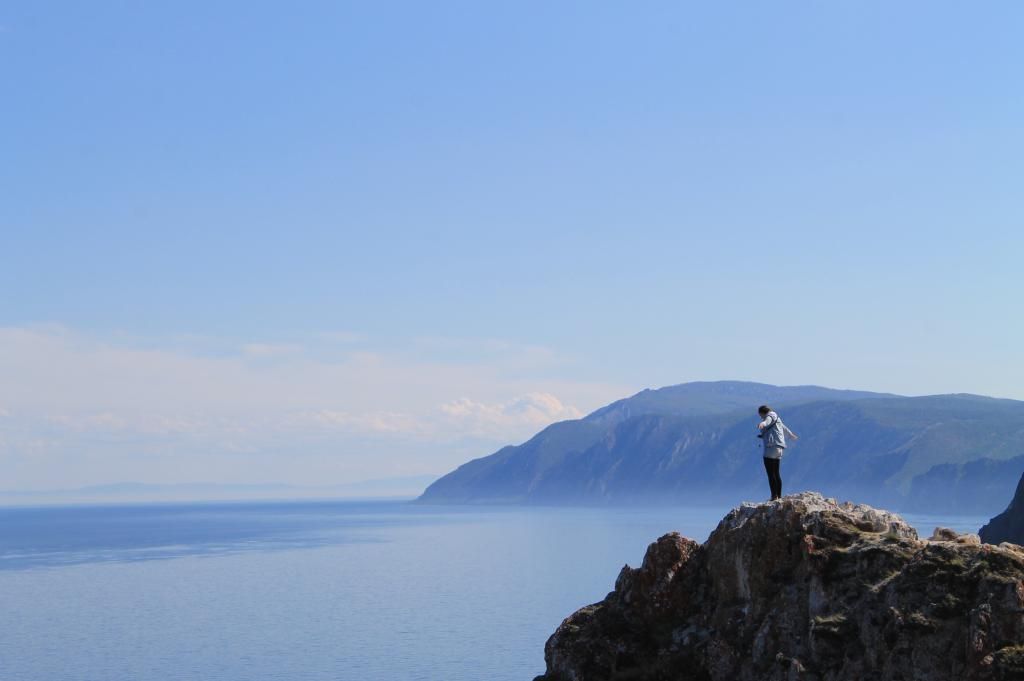
When Russian explorers came to Baikal in the 17th century, Olkhon was the first place they visited. The island is considered the sacred center of Baikal, filled with legends, 143 archaelogical objects, and many holy places. It is certainly unlike any other place I’ve ever seen.
Although we were exhausted when we got there, we decided to wake up very early the next morning to see the sunrise over the island.
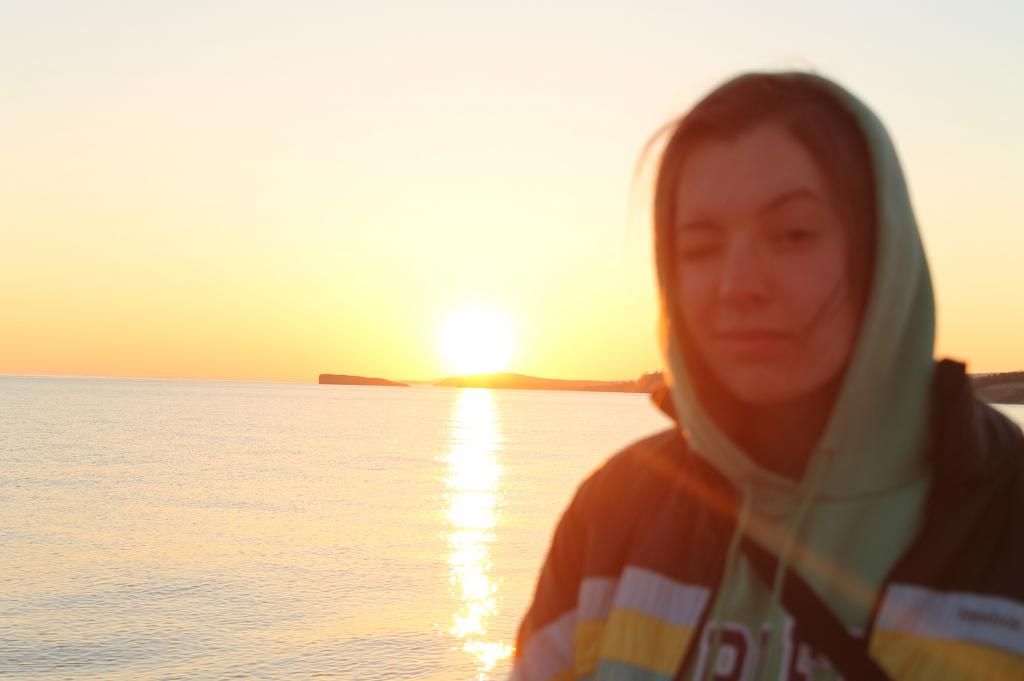
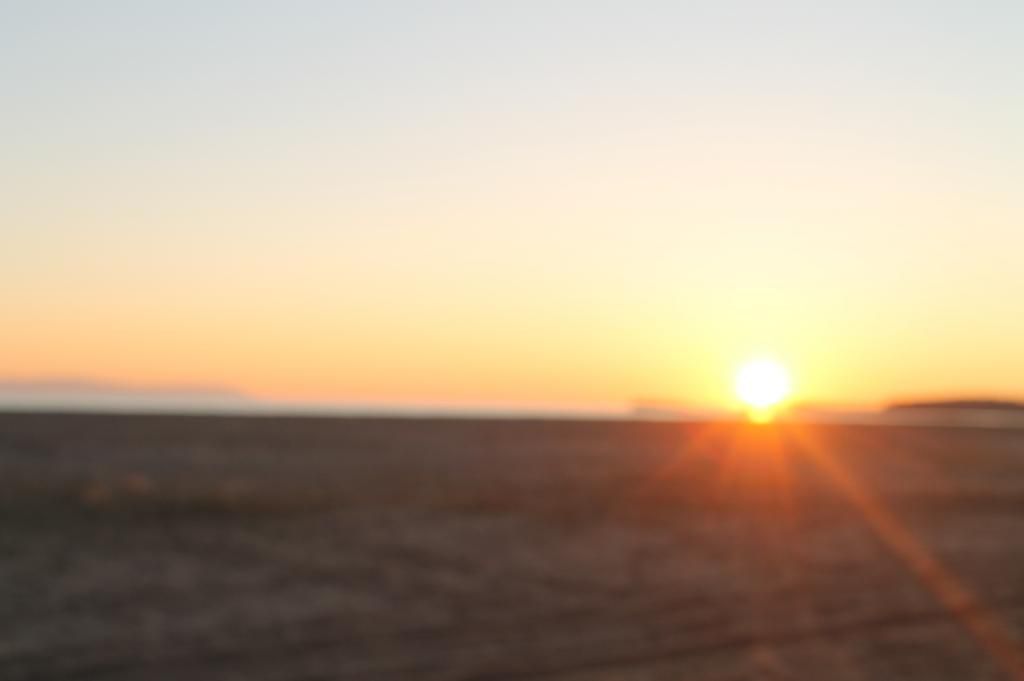
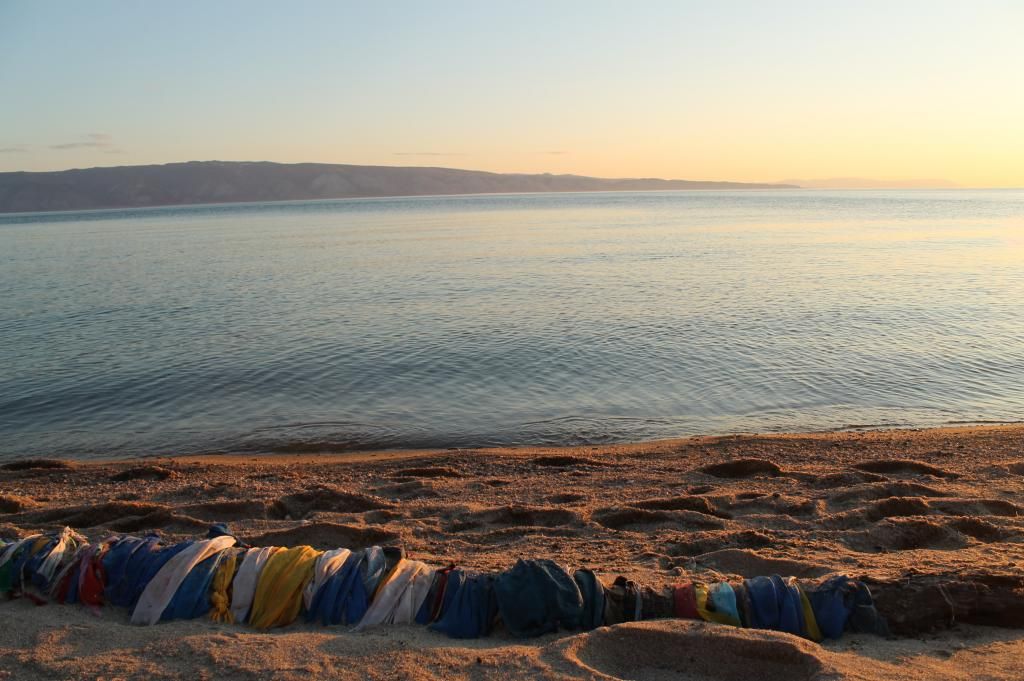

We sat on the rocks and watched the sun spill out over this sacred lake. I’m not sure if I’ll ever get to see Olkhon again, but it’s certainly got a special place in my memories.
Our Heroes Made of Clay
After getting back onto our bus after the tour of МЧС, Diane wouldn’t tell us where we were going next, only that it was a surprise. And it was! We were invited into a ceramic shop to make our own clay figurines.
First, we were given a brief demonstration of how a clay wheel works, shaping a lump into something symmetrical, such as a vase or the bases for our clay figurines. In high school, I took an art class that was exclusively about how to make ceramics using a clay wheel, and it was one of my favorites. Even during breaks from Carleton, I like to make little clay characters and animals. I would have loved a chance to try out their wheel (it was slightly different from the wheels I’ve used) but we had our clay heroes waiting to be born.
Next we were led over to the premade bases – or rather, bodies – for our clay heroes.
We were guided through the initial steps of making indents for the legs and head and attaching arms.
Before getting too engrossed, we were told to have a character in mind. I chose a dragon. I learned some neat techniques for detail work: a metal tube bent at one end in the shape of a tear-drop was perfect for decorating my dragon with scales.
All of our heroes are unique: we’ve got babushkas (Russian grandmas) and dedushkas (Russian grandpas), beautiful Russian girls, a shaman, a penguin and a nerpa (Baikal seal). Can you spot them all?
Clay is my favorite medium and this was one of the best surprises I could have asked for. Thank you to Diane and everyone who made this possible!
Sporting Around Ulan-Ude
In Russia, and particularly in Siberia, I have noticed sports facilities and locals dressed up in sporting outfits. Perhaps this simply isn’t something I’ve noticed at home, and this isn’t just a Russia/Siberia thing. However, I think it’s interesting and would like to mention a few places and things we’ve seen in Siberia.
During one of our tours through Ulan-Ude, we drove past a huge, red sports complex. It’s one of the largest sports complexes in Eastern Siberia.

The big, red sports complex in Ulan-Ude. Picture from http://survincity.com/2011/07/in-ulan-ude-opened-one-of-the-largest-sports/.
The entire complex is 36,000 square meters, nearly nine square acres. It has multi-purpose stadiums, rooms for archery, martial arts, and even an Olympic-sized swimming pool.

The complex’s pool. Picture from http://survincity.com/2011/07/in-ulan-ude-opened-one-of-the-largest-sports/.
Not far from Ulan-Ude, we visited the Ivolginsky Datsan, a Buddhist university monastery that was opened in 1945 (see Dilara’s Three Faiths blog and Almeda’s Dog Blog). When we first arrived and then again later on, our attention was brought to the datsan’s outdoor stadium.
Unfortunately, I don’t have a better picture nor could I find one on the internet. I don’t know what the Buddhist monks do in their airy stadium, but it sure looks like it’d be fun!
Like in Moscow, even Ulan-Ude had citizens proudly donning their track suits. A few of us have considered buying matching track suits embroidered with “RUSSIA” until we noticed the price tags. But I still wouldn’t mind having the kurtka (light jacket) part of the track suit. Anyways, I mentioned earlier that even though we’ve noticed nice sports facilities and track suits around in Siberia and Russia, maybe we simply don’t notice our gyms and people at home. Either way, it’s fun to watch out for different types of sports complexes and track suits!
Dog Blog
On one of our first days in Siberia, we drove out to the Ivolginsk Datsan, a Buddhist monastery near Ulan-Ude. It was cold and windy in the grasslands outside of the city, but it was pleasant to spend some time outside.
The buildings in the complex were beautiful, of course, but I was even more interested in the dogs that wandered freely around the grounds of the monastery. I thought they could be strays, but I think the lamas at the monastery feed them: even though they were dirty, they seemed well-fed.
Ivolginsk Datsan is actually famous for its dogs; more specifically, the rare Hotosho breed the monks raise there. The Hotosho is an ancient breed that Buryat and Mongol nomads used for herding, and which doubled as a guard dog for their settlements. Hotosho are enormous, with long, shaggy fur to insulate them against the harsh Siberian winter.

Photo from Wikimedia Commons.
The Hotosho is often described as having four eyes because of the eye-like spots many of them sport on their foreheads. The Buryat traditionally believed that these “extra eyes” make for better watchdogs. At the monastery, we visited the row of kennels where the Hotosho live.
The dogs weren’t too pleased to be stared at by a group of strangers, and they barked like mad. They were very fluffy and I thought they were adorable from a distance, but all the same, I’m not sure I’d want to meet one up close.
The Most Beautiful Place in the World

Barguzin Valley has got to be the most beautiful place that I have ever seen. Snow-capped mountains stand in every direction, and take on a wonderful blue hue from a distance. The rivers and streams that run and bubble through are incredibly clean, clear, and cold, the way Siberian water should be.
There’s something that’s just perfect about it – the way the sun makes the water shimmer, the indescribable green of the trees and bushes. Even a dilapidated bridge is lovely here.
There’s also something ancient about it – the rocks scattered across the steppe, the unforgiving winds. As we rattled along on a dirt road through the valley chewing on serra gum*, I imagined the Mongols and Evenks who lived here a long time ago. The name of the valley comes from the word “Bargut,” which means “wilderness,” and was the name of the Mongolian tribe that lived here. It’s said that Genghis Khan’s mother was born in Barguzin Valley. Today, 30,000 people live in this spectacular place.


*a natural gum made from the resin of Siberian larch trees. And yes, it does taste like chewing on a tree (in a good way).
I saw a baby ocean!
The lake is literally moving, and no, I’m not misusing the word “literally”. Back home, one of my most cherished friends in college is currently a geology major, and I never quite understood his interests in “rock” and “earth” until I visited the Baikal Museum (formerly known as the Limnological Museum) in Listvyanka near Irkutsk the other day.
When we arrived to the Baikal Museum, we were greeted by the extremely knowledgable Tatyana Serafimovna, who gave us one of the most eloquent and informative tours I’ve had in Russia in perfect British English. After days of heavy travel, no one in the group was really in the mood for a tour of a museum, but with Tatyana’s help, I actually had a wonderful time. Tatyana Serafimovna had actually not worked in the museum in the past three years, but still managed to remember every single detail about every exhibit. As a result of her vast amounts of knowledge, I loved the museum, especially the very first exhibit.
The first exhibit, dedicated to the geology of Baikal, describes the formation of Siberia and its famous lake throughout millions of years of Earth’s geological formation.

A cool internet picture of the coast of Lake Baikal.
A couple of things that I didn’t know:
- A part of Siberia used to be its own continent, called (you guessed it!) Siberia, a couple hundred million years ago. The old continent was hit by the moving Indian subcontinent (the same one that created the Himalaya Mountains), which eventually led to a small crack in the ground to form and fill up with water. Back then it was a little pond. Over the years, the crack opened up more and more, and the lake gained its astonishing depth: 1642 m.
- Even today the lake is being pulled apart by the plates it is situated on, called the Baikal Rift Zone. In fact, it moves on average about 1 cm a year. In the book we are reading for class, the author, Peter Thompson, notes that some scientists think of Baikal as a baby ocean.

Geographical map of the plates surrounding Baikal.
- Unsurprisingly, there is a lot of seismic activity in the area, most of which go unnoticed by the local population. In the museum, we saw a computer monitor displaying and recording the seismic activity of the region through seismographs located in the cellars of the museum. The monitor showed constant tiny movements on all three planes (north/south, east/west, and vertical).
The museum pretty much blew my mind. Who would have guessed that a little pond would one day became the world’s largest container of freshwater and maybe in the future a massive ocean?
Here is some extra information online:
Landscapes: Ulan-Ude
I am sure that most people have a mental image when they picture Siberia–snow, frost, perhaps just the word “cold.” I knew that Siberia would be different than Moscow. What I didn’t know was that it would remind me so much of my hometown. I live in Colorado and I love the mountains, the pine trees, and the open skies that make my state so beautiful. When we first arrived in Ulan-Ude, the capital of Buryatia, I was shocked to find that it looks a lot like Colorado. At every bend in the road it seemed as if I was seeing a little piece of home. Ulan-Ude is located in central Asia, not far from the border of Mongolia. Summers here are hot and winters are very cold. In general, there is little to suggest that the countryside around Ulan-Ude should remind me so much of Colorado, and perhaps it is just homesickness speaking. However, if there is one thing I am learning here in Buryatia, it is that landscapes play a very important, often sacred, role in people’s lives. The landscape here has certainly touched me already.
One of the things that makes Ulan-Ude quite a bit like Colorado is the mountains. Located 2000 feet above sea level at the base of the Khamar-Daban and Khrebet Ulan-Burgasy mountain ranges, the city seems to be embraced by mountains from every side. Another thing that reminds me of home here is the proliferation of pine trees. However, whereas in Colorado pine trees grow side-by-side with aspens, here the ubiquitous березы (birches) can be seen growing all along the roadside. I am curious how much of the landscape is natural and whether or not these trees are native to this part of the country. The air here is much cleaner than in Moscow and in places smells exactly like summers spent outside in Colorado, a mixture of sap, dried pine-needles, and sweet drying grass. I’ve even seen signs by the side of the road warning of forest fire, the exact same signs we have at home, only in Russian. Coming to Siberia has been, in some ways, like coming home.
Banya Bliss
After a long and tiring day that ranged from standing in awe of an amazing Buddhist datsan to visiting a children’s home, we took up our host family’s gracious invitation to visit their dacha. Here we had a special opportunity to bathe in a Russian banya, or bath-house. None of us knew exactly what to expect: we have read and seen some depictions of a banya in films and readings for Russian classes. We had this vague idea of running back and forth mostly naked between a sauna and something colder, but it did little to inform us of what the banya would be like.
The building is fairly small and wooden. Our host mother explained that larger banyas can have three rooms: a vestibule, a wash room, and a steam room. Ours had just two, the vestibule and steam chamber. After a short banya crash course, we each took turns to dress down to small, but strategically-wrapped towels (which mostly stayed in place, despite the ever present threat of a major “wardrobe malfunction”). Armed with soap, towels, and uncertainty, we finally dared to open the door.

When we did, heat from the belly of an angry dragon rushed towards us, and each of us felt doubt surge up again. Nonetheless, we forged inside and barred the door behind us. Once the shock of the heat wore off, we began to notice other details around us. The stove glowed merrily and sweating boards gave off a rich, rustic scent. As our bodies warmed by sitting so close to the fire, we discussed what we should do next. One by one, we slowly began to sweat until a prickly feeling prompted us to step outside, ending our ‘baptism’ in the banya.
Crossing the threshold again brought a blissfully cool gust into the room, tickling every pore as it passed. We each began to shiver as we drank some water. Stepping outside into the sun has never been so frigid! Using a banya demands one to undergo rapid switches from hot to cold, even running straight into the snow in winter. Even our much less radical change gave us a chill that got us back inside quickly.
This time we chucked water down a special little spout in the stove, which produced a billow of steam. Imagine the feeling of a humid blast furnace bursting across your body in a wave of heat from the head down. The air became so thick with humidity that we could feel the water precipitating even as we breathed in. The feeling you probably consider ‘sweating’ disappeared, transcending beyond mere sweat to flowing channels of moisture. As one remarked to another, “I’m not sure whether it’s awesome or disgusting, but a pool of sweat has actually formed in your belly button.”
After sweating that much, you stop feeling sweaty, and begin to feel clean. At a certain point every impurity of the skin is lifted up and out: the oppressive heat simply makes it all melt away. After the first shock, the body manages to adapt to the new environment, and it feels like you are the shower, your sweat magically becoming cleansing water that sweeps away soap and dirt, leaving an entirely clean feeling behind.

